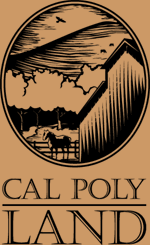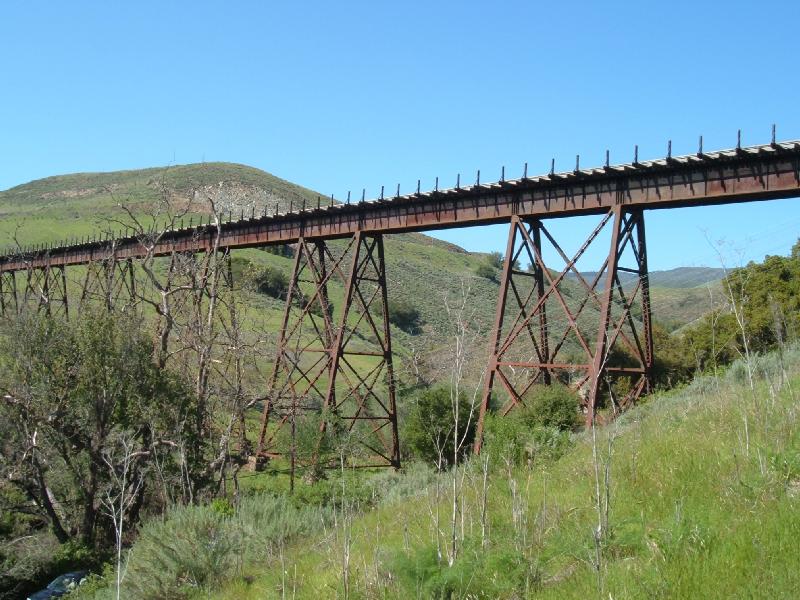|
The History of the Trestle
|
|
|
Stenner Creek trestle |
|
|
Looming 85 feet above Stenner Creek, the Stenner Trestle is an impressive demonstration of technology juxtaposed against the surrounding agriculture. To complete Southern Pacific's rail link over the Cuesta Grade, a bridge was needed to span the 950 foot long gap of between the two sides of Stenner Canyon . In 1893, construction was begun to create the bridge that would help complete the link between San Luis Obispo and San Francisco . The trestle was built by Thompson Bridge Company in the viaduct style (viaducts are bridges that connect points of equal height in the landscape). The rails are of steel (weighing 72lbs. each), with the platform constructed from redwood ties. At the base of the trestle are 24 massive trachyte blocks, made of concrete and granite. To further establish the foundation, crews dug pits that measured 25 feet into the ground before any rock was laid. It is estimated that the cost of track and bridge brought the total cost of the trestle to about $100,000 per mile, a pricey cost for the era in which it was built. Building the trestle was a feat of engineering worth noting. To raise the sections of track 85 feet in the air, a sidetrack was temporarily constructed next to the bridge. A kind of crane hoisted each piece into the air where it was then riveted into its final resting place. The first of many trains ran its track on May 7, 1894. Today, the trestle is still a landmark for both the railroad community and Cal Poly.
|




